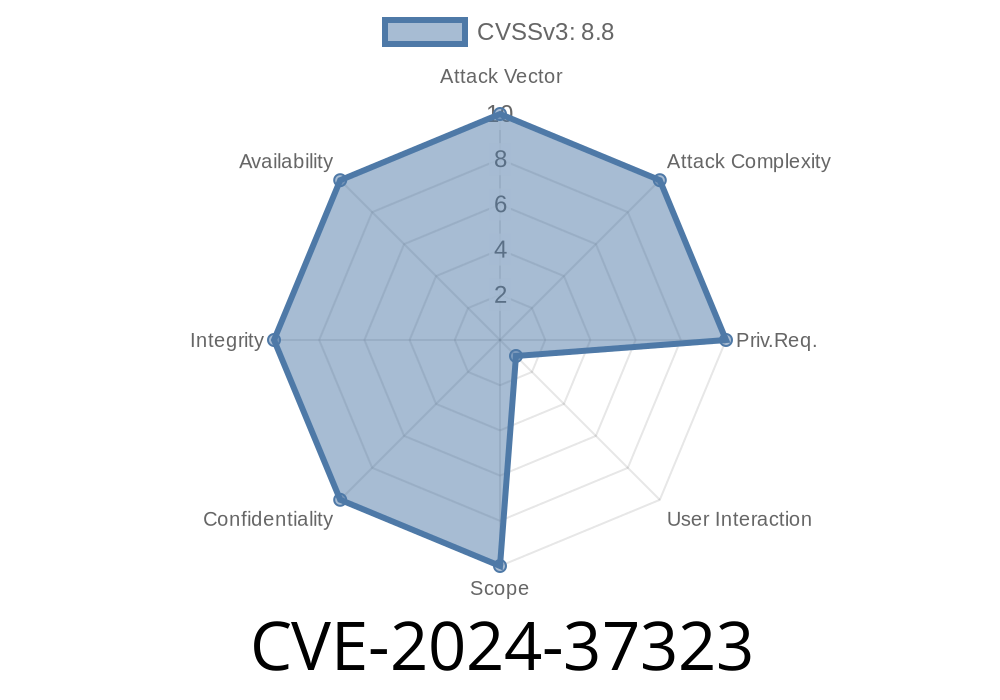On May 14, 2024, Microsoft disclosed a serious vulnerability in the SQL Server Native Client (SQLNCLI) OLE DB provider. This vulnerability, registered as CVE-2024-37323, could allow an attacker to run arbitrary code on affected systems—a textbook case of a remote code execution (RCE) vulnerability. If you work with Microsoft SQL Server or develop applications using SQL Server Native Client, keep reading for a plain-English breakdown, so you can understand what's at stake and how to protect yourself.
What is SQL Server Native Client OLE DB Provider?
The SQL Server Native Client is a standalone data access API provided by Microsoft for connecting to Microsoft SQL Server. It supports both OLE DB and ODBC interfaces.
The OLE DB provider (Object Linking and Embedding, Database) lets applications access SQL Server directly, usually by connection strings found in app configuration files, for example:
Provider=SQLNCLI11;Server=myServerAddress;Database=myDataBase;Uid=myUsername;Pwd=myPassword;
This provider is widely used in Windows environments, especially in legacy apps.
What is CVE-2024-37323?
CVE-2024-37323 refers to a bug in the SQL Server Native Client OLE DB provider where it doesn’t properly validate input or handle memory safely. In some cases, a specially crafted query or connection could let an attacker compromise the process memory and run code remotely as the logged-in user, often with SYSTEM privileges if the service is running as such.
How Does the Vulnerability Work?
Imagine an attacker sends a malicious payload to a server or application using the vulnerable OLE DB provider. By exploiting flaws in how user-supplied data is handled, the attacker could hijack the provider and execute code. This is especially dangerous when the service runs with high (or SYSTEM) privileges.
Typical attack scenario
1. The attacker has network access to an app/server using the vulnerable SQL Native Client.
2. The attacker sends a crafted request (connection string, query, parameter) to trigger memory corruption in the OLE DB provider.
3. The attacker’s code runs with the same permissions as the app or service—potentially gaining control over the server.
Proof-of-Concept Snippet
*Note: This is a non-malicious code example, intended to demonstrate a potential attack surface—not an actual exploit.*
Suppose your app constructs a SQL query using unsanitized user input
string userInput = Request["username"];
string connString = "Provider=SQLNCLI11;Server=localhost;Database=SampleDB;Uid=admin;Pwd=password;";
using (OleDbConnection conn = new OleDbConnection(connString))
{
conn.Open();
string query = $"SELECT * FROM Users WHERE username = '{userInput}'";
OleDbCommand cmd = new OleDbCommand(query, conn);
OleDbDataReader reader = cmd.ExecuteReader();
// process results
}
If a vulnerability exists in the OLE DB provider’s parsing, a specially crafted userInput could trigger code execution.
Real-World Exploit Example (Hypothetical)
The vulnerability details are kept secret to prevent mass exploitation, but similar OLE DB flaws sometimes allow buffer overflows via malicious long connection strings or malformed queries.
Memory corruption occurs, and the attacker gains arbitrary code execution.
import pyodbc
payload = "A" * 4096 # Oversized input to trigger buffer overflow
conn_str = (
"Provider=SQLNCLI11;Server=target-server;"
f"Database={payload};"
"Uid=hacker;Pwd=hackpass;"
)
try:
conn = pyodbc.connect(conn_str)
except Exception as e:
print(f"Possible crash/exploit: {e}")
*Disclaimer: This is a simulation, not a working exploit!*
How to Protect Your Systems
Patch Immediately:
Microsoft has released fixes as part of their June 2024 security updates. Install the latest cumulative update for your SQL Server and Windows systems.
- Microsoft Security Advisory for CVE-2024-37323
- Download Security Patches
Stop Using Deprecated SQLNCLI:
Microsoft recommends migrating off SQLNCLI (Native Client) to Microsoft OLE DB Driver for SQL Server (MSOLEDBSQL) or ODBC Driver for SQL Server where possible.
Restrict Access:
Use firewall rules and network segmentation to limit who can talk to your database servers.
Sanitize Inputs & Principle of Least Privilege:
Never allow raw user input in connection strings or queries. Run apps with the minimum privileges necessary.
References
- Microsoft: CVE-2024-37323 Security Update Guide
- NIST NVD Entry for CVE-2024-37323
- Microsoft Docs on SQL Server Native Client
- SQLNCLI Deprecation Notice
Final Thoughts
CVE-2024-37323 is a classic example of why legacy database drivers can become a “back door” for hackers. If you run SQL Server, or build on top of SQL Server Native Client, patch your systems now and plan to migrate to supported drivers soon. Always practice good app security, sanitize user input, and restrict database access.
If you want more details, explore the links above—but your first step should always be apply the update!
Timeline
Published on: 07/09/2024 17:15:20 UTC
Last modified on: 08/20/2024 15:47:26 UTC
